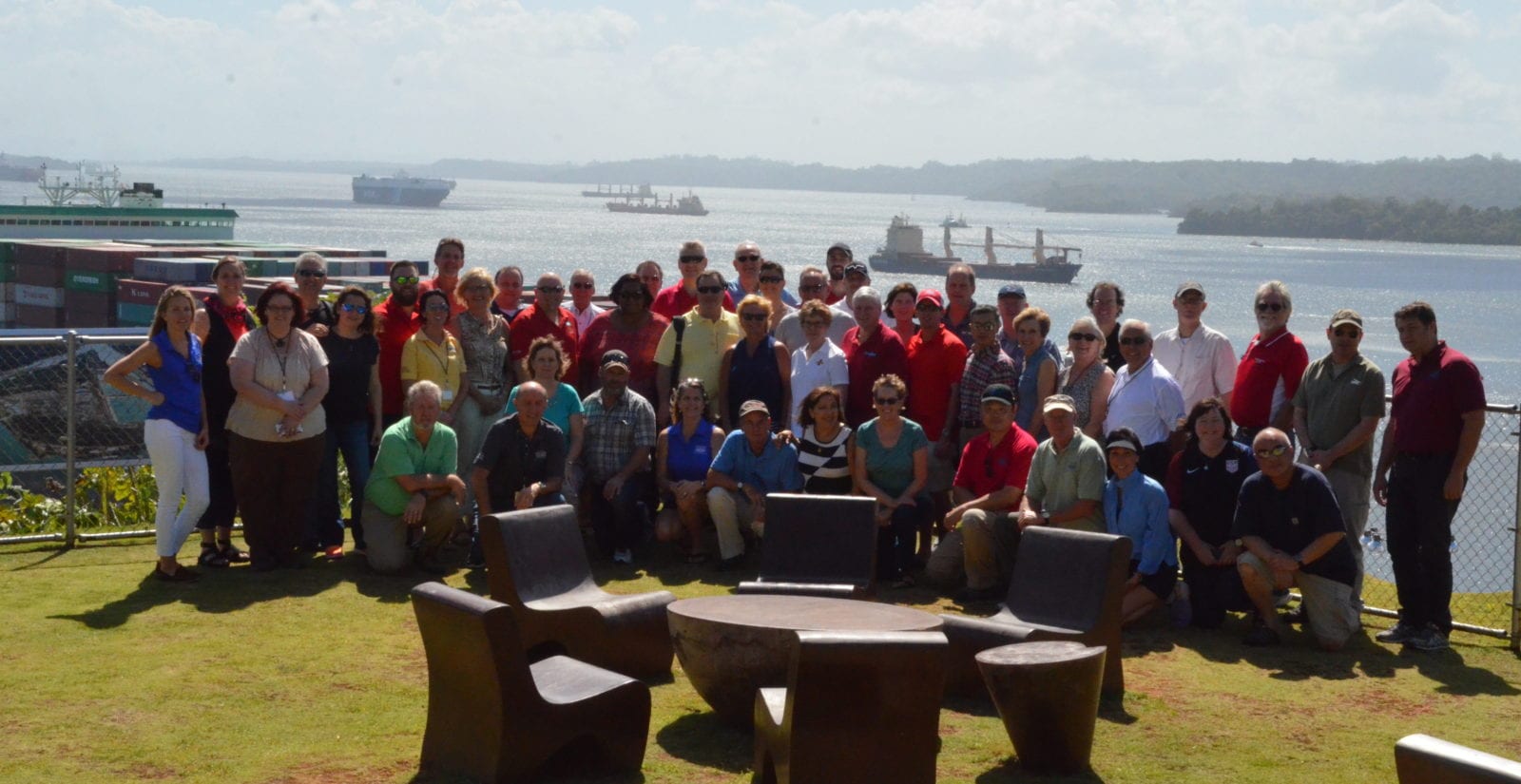USSEC Hosts Aquaculture Educational Opportunity in Panama for QSSBs
- Category:
- General News


USSEC and the Soy Aquaculture Alliance (SAA) hosted the 2017 Aquaculture Educational Opportunity for Qualified State Soybean Board (QSSB) members. U.S. Soy growers traveled to Panama from January 16 to 20 to build relationships with researchers and USSEC staff focused on aquaculture and also see the recently expanded Panama Canal.

Representatives from Nebraska Soybean Board; Iowa Soybean Association; Michigan Soybean Promotion Committee; Missouri Soybean Association; Kentucky Soybean Board and Soy Aquaculture Alliance; Indiana Soybean Alliance; and South Dakota Soybean Research & Promotion Council joined USSEC staff and directors from the American Soybean Association (ASA) and the United Soybean Board (USB) in Panama City.

The first day’s agenda focused on an overview of the trends and opportunities for the global aquaculture industry. USSEC Marketing Director – Aquaculture Colby Sutter welcomed attendees and gave a summary of the Aquaculture Industry Advisory Council. USSEC aquaculture staff consultants from around the world provided updates to participants. USSEC Aquaculture Program Manager Jim Zhang spoke about China’s aquaculture industry and USSEC China Freshwater Aquaculture Technical Manager Zhou Enhua discussed China’s Freshwater Aquaculture and provided intensive pond aquaculture (IPA) updates. USSEC Southeast Asia (SEA) Technical Director – Aquaculture Lukas Manomaitis provided an overview of Southeast Asia’s aquaculture sector, and Asia Marine Specialist, Aquaculture – SEA Hsiang Lan gave an overview of Asia’s marine aquaculture sector, followed by USSEC Project Manager of Aquaculture Utilization - Americas Jairo Amezquita’s overview of Latin America’s aquaculture sector.

After lunch, Auburn professor Jesse Chappell spoke about IPA and how it’s been implemented in USSEC’s various regions around the world. USSEC aquaculture consultant – India Umakanth Rand discussed India’s aquaculture and USSEC consultant – EU/MENA Sirri Kayhan covered Turkey’s sector. Tim O’Keefe of Aqua-Food Technologies provided an overview of the aquafeed sector before Ms. Sutter wrapped up the day with a discussion of standards and certifications.

The group made a site visit to the Panama Canal on the second day of the mission.

The third day of the event focused on research, trends, and opportunities.

Henry Clifford of Aqua Bounty Technologies kicked off the day, followed by Bridget Owen, who talked about SAA aquaculture research and opportunities. Andre Dumas spoke on the topic, “Identification of Genetic Markers Associated with Growth Performance on a Soybean Meal Based Diet for Atlantic Salmon.” Matt Powell gave a presentation entitled, “Modified Dietary Amino Acid Balance to Increase Soy Protein Inclusion in Trout Feeds and Validation of Calprotectin as a Biomarker of Soybean Meal Induced Enteritis” and Gibson Gaylord gave a research presentation, “Effect of Pellet Size, Extrusion Technology, and Water Temperature on Taurine Leaching in Soy-Based Fish Feeds.” Ron Hardy spoke on the topic, “Improving Aquaculture Sustainability By Developing Rainbow Trout with Enhanced Capacity to Utilize Omega 3 Fatty Acids in Plant Oils to Increase EPA and DHA” and Allen Davis gave a talk on “Determination of Methionine Requirement and Efficacy of Methionine Supplements for Pacific White Shrimp Reared on Soy Based Diets.”

After lunch, participants heard from Jorge Suarez, University of Miami, and received an overview of Egypt’s aquaculture sector from Salah Taher, before hearing a summary presentation and moving into an open forum discussion.

The Panama Canal is critical to the movement of soy. Approximately 600 million bushels of U.S. soybeans annually transit the Panama Canal, making soy the number one U.S. agricultural commodity using the canal. A whopping 44 percent of total U.S. Soy exports move through the canal.
The canal’s long-awaited expansion opened on June 26, 2016, doubling the waterway’s capacity. The new, larger lane allows more freight to be loaded on each vessel, decreases transit time, and lowers transportation costs.
Open year-round, a vessel will travel 8 to 10 hours to pass through the Canal’s three sets of locks. If the ship were to travel around South America, the route’s duration would be 2 to 3 weeks. However, shippers do pay a toll of anywhere between $300,000 to 800,000, based on capacity, to navigate the route.
